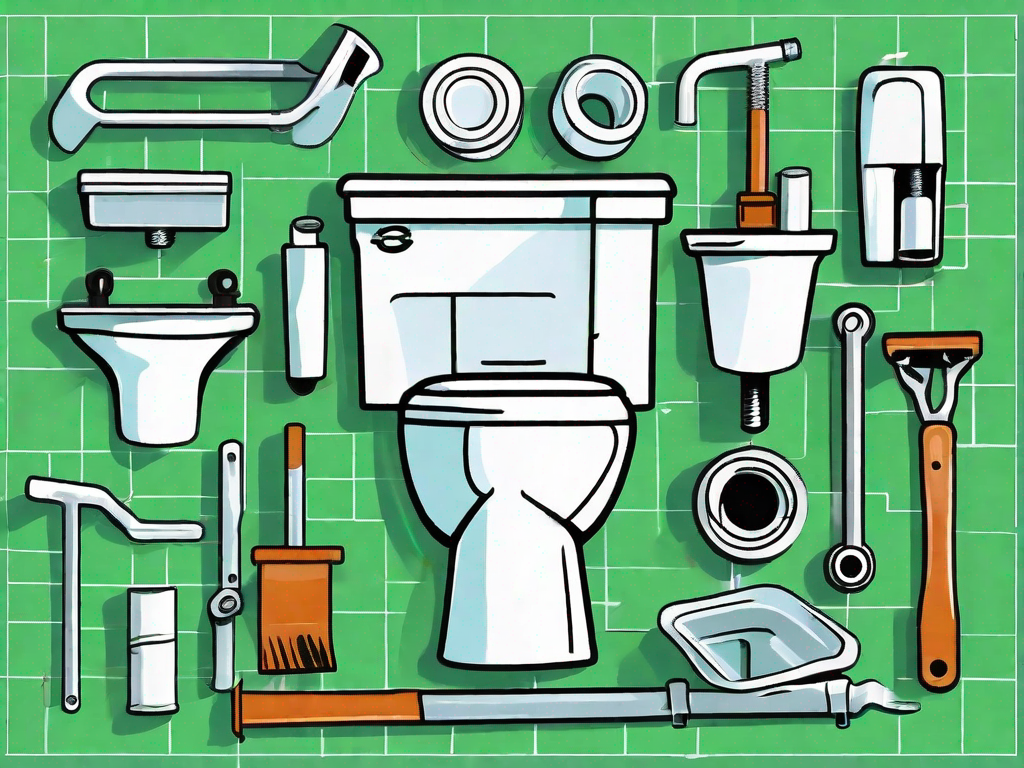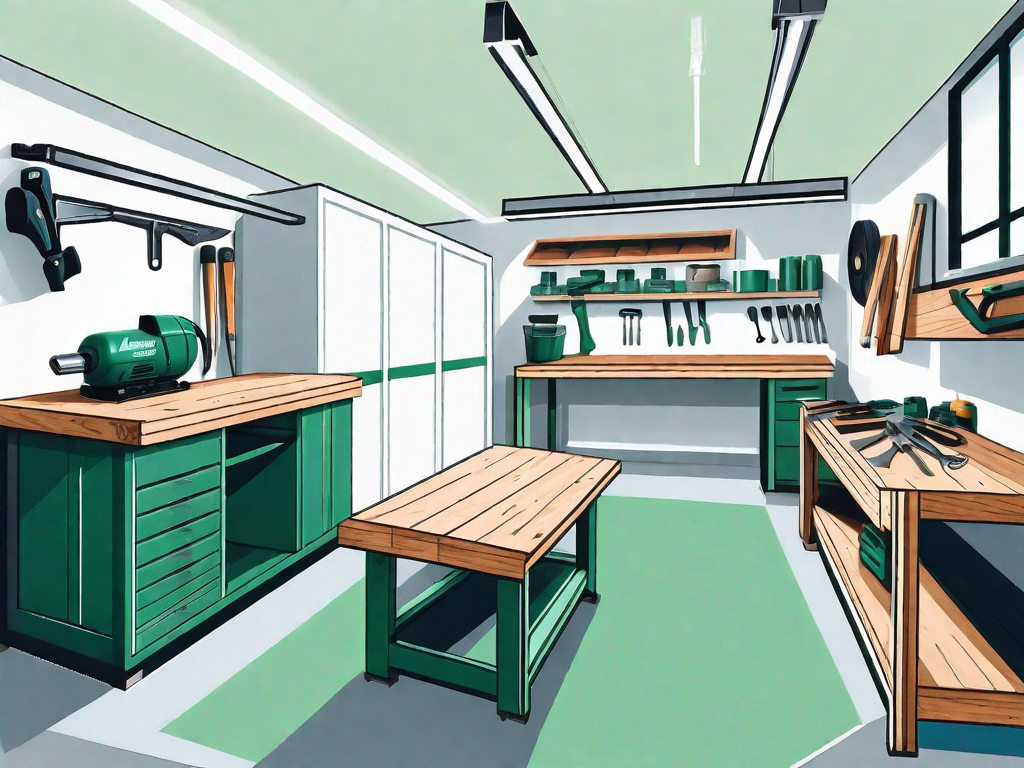A running toilet can be a frustrating problem to deal with. Not only does it waste water, but it can also lead to higher water bills. Fortunately, diagnosing and fixing a running toilet is usually a straightforward process that you can do yourself. In this article, we will guide you through the steps of diagnosing the issue, making the necessary repairs, and implementing prevention measures to avoid future problems.
Understanding the Problem: What is a Running Toilet?
Before we dive into the diagnostics and repairs, it’s important to understand what exactly we mean by a running toilet. A running toilet is a term used to describe a toilet that continues to run water into the bowl even when it is not being flushed. This constant flow of water can be caused by various factors, such as a faulty flapper valve, a defective fill valve, or an issue with the flush handle.
Common Causes of a Running Toilet
There are several common causes for a running toilet. One of the most common culprits is a worn-out or improperly adjusted flapper valve. This valve allows water to flow from the tank into the bowl during a flush, but if it doesn’t seal properly, water will continuously leak into the bowl, causing the toilet to run.
Another possible cause is a faulty fill valve. The fill valve is responsible for refilling the tank after a flush. If it doesn’t shut off properly, water will continue to flow, leading to a running toilet. Additionally, a loose or broken flush handle can also result in a running toilet.
The Impact of a Running Toilet on Your Water Bill
A running toilet may seem like a small issue, but it can have a significant impact on your water bill. According to the Environmental Protection Agency (EPA), a running toilet can waste up to 200 gallons of water per day. This not only adds up quickly but also unnecessarily depletes our water resources.
By promptly fixing a running toilet, you can save both water and money in the long run.
Diagnosing a Running Toilet
Tools Needed for Diagnosis
Before you start diagnosing the issue with your running toilet, it’s helpful to gather a few essential tools. These tools include:
- A pair of rubber gloves to protect your hands
- A flashlight to illuminate the toilet tank and bowl
- A tape measure to measure the water level
- An adjustable wrench to tighten or loosen plumbing connections
Steps to Identify the Issue
To identify the underlying problem causing your toilet to run, follow these steps:
- Remove the tank lid and inspect the flapper valve. Check if it is worn, damaged, or misaligned. Adjust or replace it if necessary.
- Check the water level in the tank. If it is too high, adjust the float to lower it.
- Inspect the fill valve for any defects or leaks. Replace it if needed.
- Examine the flush handle and chain to ensure they are properly connected and functioning.
- If none of the above steps resolve the issue, calling a professional plumber may be necessary.
Repairing a Running Toilet
Preparing for the Repair
Before diving into the repair process, gather the necessary tools and materials, including:
- A replacement flapper valve
- A new fill valve (if needed)
- An adjustable wrench
- A sponge or towel to clean up any water
It’s also a good idea to turn off the water supply to the toilet and flush it to drain the tank before beginning the repair.
Detailed Repair Procedures for Common Problems
Let’s walk through the repair procedures for the most common issues contributing to a running toilet:
Replacing a Worn-out Flapper Valve
- Turn off the water supply to the toilet.
- Drain the tank by flushing and holding down the flush handle.
- Remove the old flapper valve by disconnecting it from the flush valve.
- Install the new flapper valve by attaching it to the flush valve.
- Turn on the water supply and test the toilet to ensure the problem is resolved.
Replacing a Faulty Fill Valve
- Turn off the water supply and drain the tank.
- Disconnect the water supply line from the fill valve. Use an adjustable wrench if needed.
- Remove the old fill valve by loosening the lock nut underneath the tank.
- Install the new fill valve, following the manufacturer’s instructions.
- Reconnect the water supply line and turn on the water.
Fixing a Loose or Broken Flush Handle
For a loose flush handle:
- Remove the tank lid and locate the nut securing the flush handle inside the tank.
- Tighten the nut using an adjustable wrench.
For a broken or non-functional flush handle:
- Remove the nut and handle from inside the tank.
- Purchase a replacement handle that matches your toilet model.
- Install the new handle according to the manufacturer’s instructions.
- Test the handle to ensure it flushes the toilet correctly.
Prevention Measures for a Running Toilet
Regular Maintenance Tips
Maintaining your toilet properly can help prevent future running toilet issues. Here are some maintenance tips:
- Regularly clean the flapper valve and other components to remove any debris or mineral deposits.
- Check the water level in the tank occasionally and adjust the float if necessary.
- Inspect the flush handle and chain, ensuring they are well-connected and functioning smoothly.
- Replace worn-out parts promptly to prevent further damage.
When to Call a Professional Plumber
While many running toilet issues can be fixed by homeowners, there are situations where it is best to call a professional plumber. These include:
- Persistent running toilet problems despite DIY attempts
- Complicated repairs involving complex plumbing systems
- Limited plumbing knowledge or lack of confidence in performing repairs
Calling a professional ensures that the problem is resolved correctly and prevents any potential damage to your plumbing system.
Conclusion: The Importance of Fixing a Running Toilet Promptly
Fixing a running toilet is not only essential for conserving water and reducing water bills but also for maintaining the proper functioning of your plumbing system. With a basic understanding of the problem, some diagnostic skills, and the ability to make simple repairs, you can tackle most running toilet issues on your own. Regular maintenance and prompt repairs will help ensure that your toilet operates efficiently for years to come.



